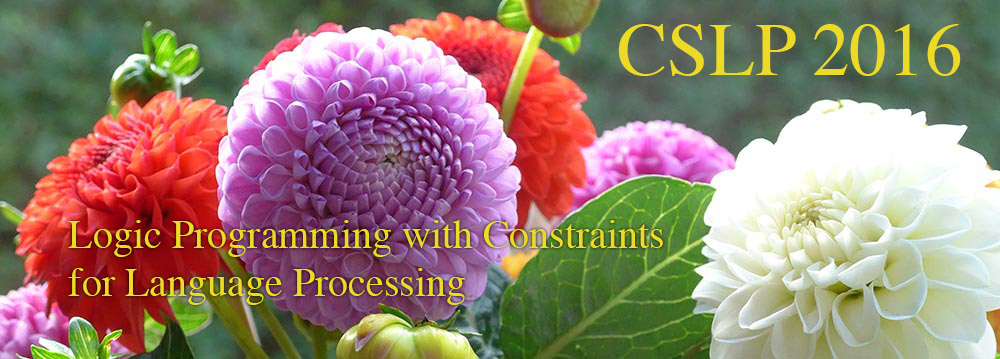

|
**PROVISIONARY** Call for contributionsA special issue of the journal Theory and Practice of Logic Programming is planned in relation to the 8th International Workshop on Constraints and Language Processing, CSLP 2016.New papers or extended and revised versions of previously accepted papersYou are welcome to submit also extended and revised versions of previously accepted papers from relevant workshops and conferences, e.g., CSLP, ICLP or CP; in that case the submitted paper should add at least 30% new material, and the relationship to the previous paper should appear.Entirely new papers are also more than welcome. Subject and topicsConstraints are widely used in linguistics, computer science, psychology and many other fields. How they are used, however, varies widely according to the research domain: natural language processing, knowledge representation, cognitive modeling, problem solving mechanisms, etc. Since 2004, the CSLP workshop series and associated publications have addressed different constraint oriented ways of modeling and treating language, and similarly to the CSLP 2016 workshop, this special isue focuses (non-exclusively) on logic programming based methods.Several years of CSLP workshops aiming at integrating the different approaches on Constraint Solving and Language Processing shed light upon possible common frameworks capable of explaining how constraints play a role in representing, processing and acquiring linguistic information, and this from a formal, technical, and cognitive perspective. Among these frameworks, those that contained logic programming as a main aspect emerged as the most promising ones, e.g.. Constraint Handling Rules (CHR) as an extension to the logic programming language Prolog has added a mechanism for forward-chaining reasoning to complement Prolog's standard backwards chaining, goal-directed style. The combination of the two proved to provide a very powerful reasoning framework that creates an extended potential in applying logic programming for language processing and reasoning. Such results allow us to predict that adding logic programming may quite likely jump-start a whole new area of research that stands to revolutionize and revitalize formal logic approaches to NLP, adding robustness and flexibility to the models that can now be achieved, while elegantly marrying efficiency with direct executability. Cross-discipline approaches are also welcome.
Topics include, but are not limited to:
**PROVISIONARY** Submission deadline **PROVISIONARY**
Guest EditorsHenning Christiansen, Roskilde University, DenmarkVerònica Dahl, Simon Fraser University, Canada. Submission formatSubmissions must be made in the TPLP format and handled by the TPLP submission system:
|